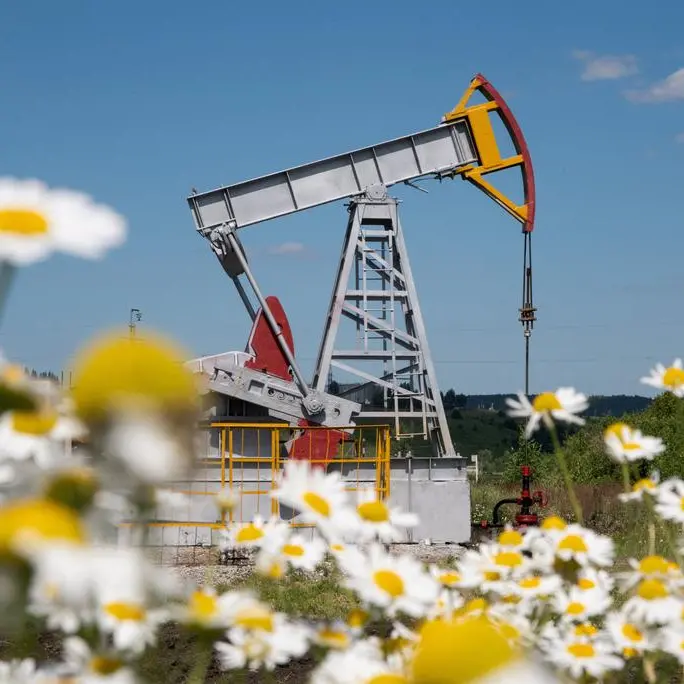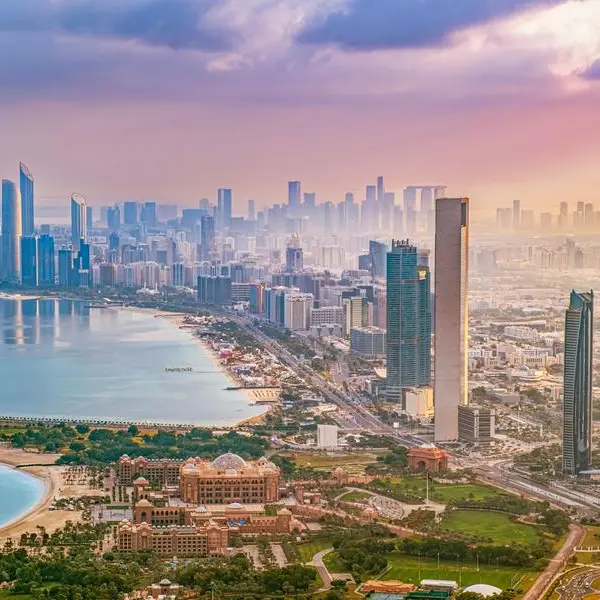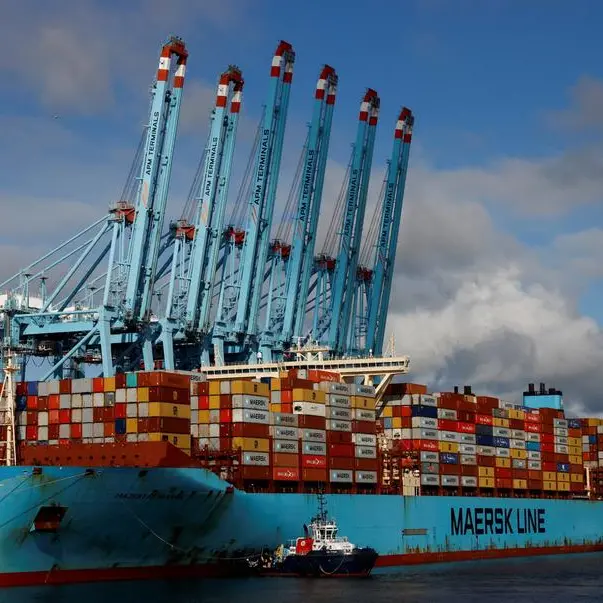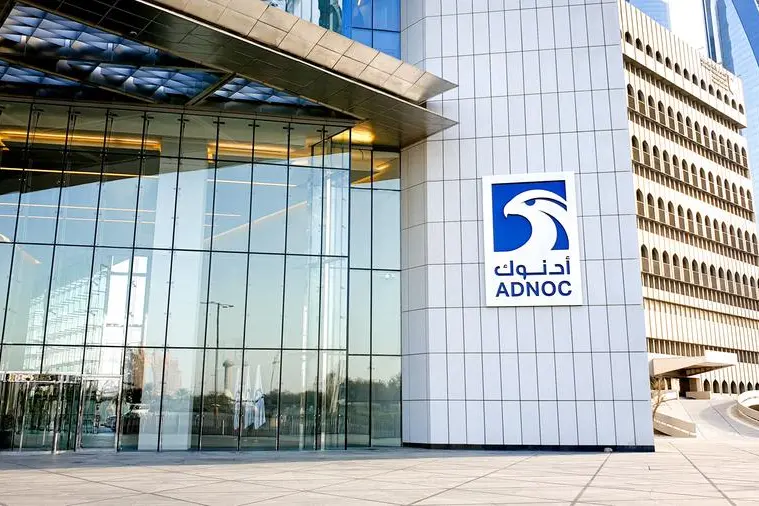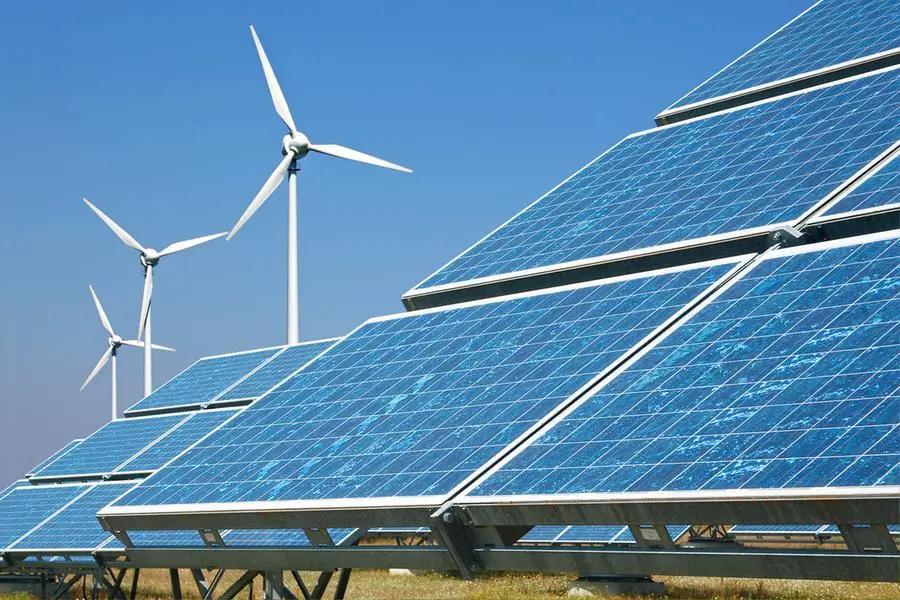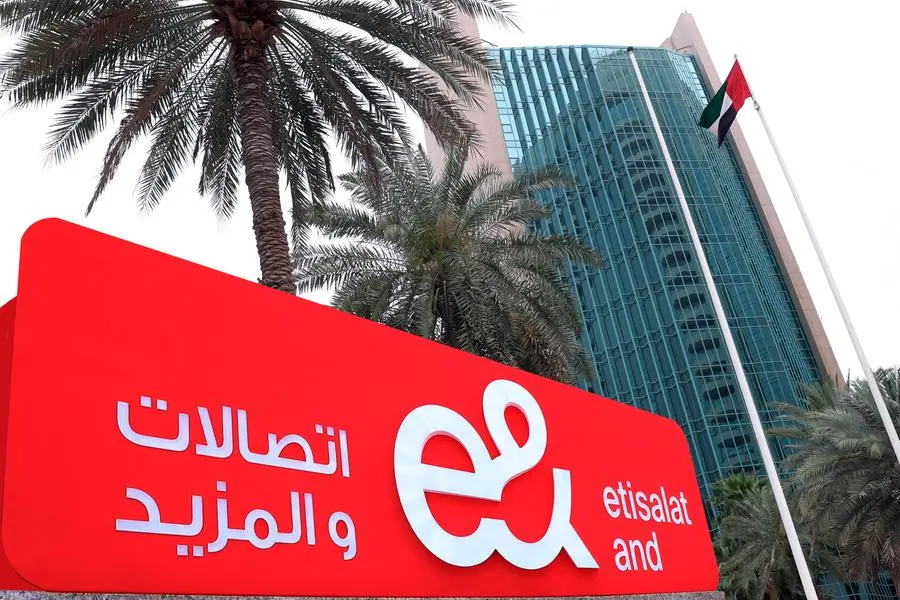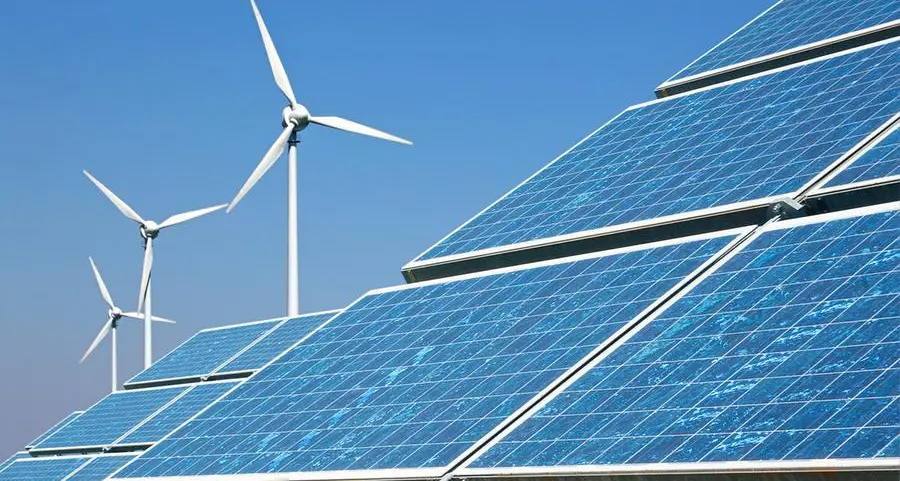Dr Murat Sarioglu, Associate Consultant & Principal Process Engineer MWH Europe, has over 15 years of experience in process, hydraulic design, start up and commissioning of domestic and industrial wastewater, and potable water treatment plants across the MENA region. His expertise and research have focused on water and wastewater reuse schemes using conventional and membrane technologies, including MF/UF and reverse osmosis (RO) technologies.
In addition to extensive research on Membrane Bio-reactor (MBR) performance and applications, he has designed numerous full-scale MBR plants in the Middle East. Sarioglu spoke to H20's Anoop K Menon on the relevance of MBR technology for the region, how it can help realise decentralisation and re-use paradigms, and the waste disposal issues associated with polished TSE.
In your opinion, what are the key wastewater treatment challenges in the Middle East?
The key wastewater treatment challenges in the Middle East may be summarised under the headings of inlet wastewater character, footprint and sewer/TSE mains. The inlet wastewater challenges include high soluble sulphide levels (that can reach up to maximum 30-40 mg/L), low alkalinity (as low as 150-200mg/L CaCO3), high particulate fraction of organics (soluble COD/total COD can be as low as 20%) and high temperature (minimum raw sewage temperature of 22oC and maximum of 38oC).
Negative impacts of high soluble sulphide are excessive hydrogen sulphide generation, need for additional aeration/pre-aeration and deteriorating impact on sludge digestion. Low alkalinity has a negative effect on nitrification and leads to low pH in effluent if not corrected. It increases the risk of exceeding effluent ammonia limit. High temperature of inlet sewage increases the need for oxygenation and can have a negative effect on nitrifiers/nitrification for temperatures reaching and exceeding 40oC, though a positive spin is lower sludge age. High particulate fraction of organics translates into need for digestion and having primary settlers, though on the positive side, a decrease in the need for oxygenation is possible due to primary settling
Footprint and sewer/TSE mains challenges are mainly in terms of the high cost of land in cities and the substantial costs involved in transporting raw sewage to the central treatment plant and distributing the treated effluent over long distances. Transporting and treating sewage requires the building of sewer networks, pumping stations, screening and odour control units, while the treated effluent has to be transported back by the same route to the city for re-use. The costs involved are quite significant. I firmly believe that the solution lies in decentralised wastewater treatment because you save on raw sewage lines going out and treated effluent lines coming in straightaway. In a crowded city, you don't have to spend money on transporting sewage over 60 kilometres from point A to point B, when you could set up three treatment plants 20 kilometres apart or more and use the treated effluent locally. Moreover, not all of the sewage is collected in the city. In Dubai, for example, there are tankers coming to the Al Aweer and Jebel Ali sewage treatment plants (STP) from various labour camps. A decentralised system will take these tankers off the roads. Membrane Bioreactor (MBR) systems, due to their small footprint and superior effluent quality can lead the way in decentralised wastewater treatment.
MBR is perceived as expensive technology in terms of initial acquisition as well as O&M. Tried and tested conventional treatment methods enjoy greater confidence in the region, at least for large scale treatment. How would like to respond to this observation?
Prejudice against new technology is nothing new. However, from a financial side, whenever any new technology is introduced, the initial costs could be high. For example, in the 1990s, the membrane disc diffusers used for aeration were being sold for Euro 70 per diffuser. Today, the same are available for Euros 8-9 per diffuser. With more suppliers entering the fray, prices started coming down. The same is true for the MBR market too. The projects I am involved in and the literature reviews I have done so far indicate that the number of MBR-based STPs small, medium, large in operation all over the world has certainly increased and have proved themselves to be robust. If you know how to design and operate the MBR plants correctly, I don't think you will have any problems at all.
What are the typical cost points in MBR systems that have been addressed so far?
The dominant wastewater treatment and re-use technologies in the Middle East are conventional activated sludge systems with tertiary filtration and disinfection, or with tertiary MF/UF and Reverse Osmosis (RO). If you compare any wastewater re-use project on the basis of MBR against conventional, by using MBR you get can rid of the sand filtration step which represents a huge cost in conventional treatment. You can also partially get rid of the disinfection costs, if you are using hollow fibre or flat sheet membranes. You only need to do post-chlorination to provide the residual chlorine for the network. You also eliminate the final settling tank which is replaced by small membrane cassettes immersed in a tank or configured externally.
From a financial angle, I think the gap between conventional and membrane treatment is narrowing. The falling prices of membranes relative to the levels that prevailed in the 1990s when MBRs were introduced has been a major driver, in addition to the end purpose of reuse of the TSE.
Moreover, the effluent you get from an MBR plant is far superior to that from a conventional plant, and can be re-used without any additional step. For example, the MBR effluent can easily be used at a car wash or in a dual distribution system for fire protection or flushing of toilets. By introducing an RO step after MBR, you can widen the range of re-use applications to boiler feed, cooling water for district cooling plants, agricultural crop irrigation and process water for industrial applications. You don't have to put anything in between other than small cartridge filters (5-10 microns).
Do you feel that the biggest appeal of MBR technology is its potential for promoting effluent re-use?
At first glance, yes. Till recently, MBR was regarded as a replacement of the final settling tank used for solids liquids separation. But if you dig a bit deeper, you will come across additional benefits that go beyond filtration and solids-liquids separation, like for example, biological treatment. The concept of simultaneous nitrification/de-nitrification has a positive impact, not only on O&M costs but also capital costs. This can be leveraged in the design of the MBR system.
The major appealing factor about MBR in this region is low footprint and effluent re-use. Everywhere in the world, the land allocated for the sewage treatment plant is always the worst area. I was even involved in projects with triangular land areas. In such situations, you need to go for innovative technologies like MBR.
Can decentralised treatment using MBR address some of the wastewater treatment challenges in the region raised by you earlier in our conversation?
At the decentralised level, some of these challenges can be eliminated. When I said that sulphide can reach up to maximum 30-40 mg/L, this is at the end of a very long sewer line. In decentralised systems, sewer lines tend to be short. As a result, you don't get such high levels of sulphide even during the peak season. But other inlet challenges like low alkalinity, high particulates and high temperatures are typical of the region and need to be taken into consideration even while designing decentralised plants.
Can we be really sure of the nature of sewage coming into decentralised treatment plant?
I don't see toxic load of the type seen in industrial sewage coming into a decentralised sewage treatment plant which is located in a residential or commercial area. Of course, there will be shock loads or instantaneous peaks coming in and MBRs are good in absorbing such peaks because of the high bacteria concentration inside the system. If you have mild and minor toxic loads, you will have some washout, but that will be limited. I have experienced this myself in a MBR plant in a pharmaceutical set up, and it was working perfectly fine. But if any sewage contains toxic substances or inhibitory substances, it will sweep away the bacteria, irrespective of whether it is a MBR plant or a conventional one. Therefore, it is very important to distinguish between domestic and industrial sewage as the parameters and the variables applicable to both will affect the MBR design.
In the US, for instance, there have been concerns about Endocrine Disrupting Compounds (EDC) from pharmaceuticals consumed by residents making their way into domestic wastewater streams.
Micro-constituents are becoming a problem that needs to be taken care of and addressed on a design and site specific basis. EDCs need to be investigated further because some of them could be toxic.
At the MBR workshop during the Gulf Wastewater Treatment & Re-use Conference 2010, you stressed on the importance of nutrient removal in the Gulf region. Could you elaborate on the same?
Nutrients - nitrogen and phosphorous - can cause serious eutrophication and oxygen depletion problems in surface waters, with serious consequences, if the receiving water body is a bay or a creek. Eutrophication manifests as fish deaths, algal blooms, very low bottom oxygen levels, minimum transparency and high levels of organics. It could take decades before the damage can be reversed and water body returned to its original state. In fact, Biological Nutrient Removal (BNR) is a must in the region due to seasonal excess TSE which is discharged into the sea because there is no other place to do so. MBR is best suited for nutrient removal for several reasons. It is independent of sludge settling properties, difficulties often encountered with conventional BNR systems. Full nitrification can be achieved at lower temperatures in the same volume due to high sludge age which also enables nitrification at lower dissolved oxygen levels. I believe that simultaneous nitrification and de-nitrification (where nitrification and de-nitrification occur concurrently in an aerated reactor) can offer substantial savings in the design and operation of MBR plants.
So how is simultaneous nitrification and de-nitrification beneficial from an operations standpoint?
MBRs are considered as highly energy intensive systems because of their intensive aeration requirements whether it is aeration air or scouring. With simultaneous nitrification and de-nitrification, energy costs will be lower. Of course, membranes still have to be scoured with high levels of air. But aeration tanks don't necessarily have to be operated at high oxygen levels. You can achieve the same nitrification rates and carbon removal rates at lower dissolved oxygen levels. In one of my research studies, we achieved full ammonia removal at low temperatures down to 8oC; at 20oC, we achieved full nitrification at dissolved oxygen levels of 0.8mg/l, whereas in normal case, you need to go up 2-3mg/l to achieve this, which results in high energy costs. Anoxic tanks can be designed to have a lower volume/mass fraction.
With higher total nitrogen effluent consent, it is possible to avoid the anoxic tank. You can also reduce the re-circulation costs involved in sending the output of the aeration tanks back to the anoxic tank or eliminate the need for recirculation from the membrane tank to the aeration tank. Nitrified mixed liquor recycle can be substantially lower saving capital investment on pumps and energy costs.
When you evaluate all these over a life time of 20 years, the numbers you get are really good. Also, simultaneous nitrification and de-nitrification can be implemented as a retrofit. Most of the time, we design and predict the total nitrogen effluent through modelling. When you put this into operation, it is actually lower compared to the design basis. Therefore, when you implement simultaneous nitrification and de-nitrification, the benefits are easily seen.
Could you share some perspectives on MBR life cycle costs?
From a capital costs angle, comparing an MBR plant with an activated sludge plant, MBRs entail higher capex on membranes and associated equipment, periodic membrane replacement over the project life, fine screenings removal, washing, compacting and disposal, and crainage for removing membranes modules from the tanks for maintenance purposes, which is often the case. But these can be offset with lower capex on civil work costs (smaller tanks and elimination of FSTs); phased installation of membrane modules (until hydraulic capacity is needed); less site work due to area reduction for drainage, paving fencing, and landscaping; smaller hydraulic basins thanks to area reduction for shoring, dewatering, foundation and structural; smaller enclosures and associated architectural treatment and negligible disinfection due to the membranes retaining the bacteria and viruses.
Similarly, high O&M costs for MBRs due to lower oxygen transfer efficiency (lower alpha) for process air, membrane scouring, high rate of internal mixed liquor transfer, fine screenings removal, washing, compacting, and disposal are offset by lower O&M costs since the process is independent of sludge settling characteristics not affecting downstream units (often not accountable but very important for operators), avoiding chlorine or UV as the main disinfection process and also avoiding the cost of operating sand filters. O&M costs can also be reduced by implementing simultaneous nitrification and de-nitrification. Again, membranes forming a physical barrier for bacteria and viruses means lower O&M costs in the disinfection stage where only post-chlorination is needed to provide the residual chlorine to the network.
While there is a growing interest in using Reverse Osmosis (RO) for polishing TSE to high quality levels for district cooling and aquifer recharge, there seems to be little discussion on disposing the resultant brine. How should this issue be dealt with?
Depending on the recovery rate of the RO system, the TSE constituents will become concentrated, may be 4-5 times or even more when they turn up at the brine end. For example, if 10 mg/l of total nitrogen and 2mg/l of phosphorous goes into the RO system, at the brine end, you will have 50 mg/l of total nitrogen and 10 mg/l of phosphorous. Most of the time, the nitrogen and phosphorous concentration in the brine will exceed marine discharge standards anywhere in the world. RO brine will either have to be trucked away or treated through advanced techniques. But depending on the final re-use objective, it should be possible to aim for very low total nitrogen and phosphorous standards like for example, 3 mg/l of total nitrogen and 0.01 mg/l of total phosphorous so that you get 10-15 mg/l of total nitrogen and less than 1 mg/l of phosphorous in the brine. However, concentrated brine is inevitable if you use RO and if dumped uncontrolled into the sea, it will be an environmental disaster. How you address this issue also depends on local regulations.
There are also other issues with RO outlet such as highly corrosive pure water, which needs to re-carbonated and re-hardened before it is fed downstream into the industrial application. These issues should be taken care of in an appropriate manner and in the best engineering practice.
What are the various options available for brine treatment?
Post-RO brine has Chemical Oxygen Demand (COD), phosphorous and total nitrogen apart from other constituents such as TSS, TDS and BOD. In the case of Chemical Oxygen Demand (COD), the part of the COD that ends up in the brine is of hard or non-biodegradable nature. You have to use costly advanced oxidation (through ozone or hydrogen peroxide) to remove the non-biodegradable COD. To remove phosphorous, you have to chemically precipitate it, though you will end up with sludge. You can also oxidise nitrogen using advanced oxidation. In the case of total nitrogen, it is better to target lower limits in the effluent in order to decrease the total nitrogen level in the RO brine. The amount or volume you get in the brine is in the low 20-25%, and with higher recovery rates, it is 15% with respect to the feed flow. This reduces the footprint and scale of brine treatment technologies.
Are there regulations in the UAE for brine discharge?
Abu Dhabi Sewerage Services Company (ADSSC) has marine discharge standards. Anything discharged as waste - brine is waste in my view - has to comply with these standards. Dubai too has sea discharge standards.
Can we get MBR quality effluent from a conventional plant?
You can get the same effluent quality going into RO by introducing additional steps in conventional treatment; you will end up with the same brine too. But if you are planning on feeding the RO on very low total nitrogen, I think the cost will be higher in a conventional system because you don't have simultaneous nitrification and de-nitrification, high levels of biomass, longer sludge ages. I must also point out is that membranes have the capability to hold the colloidal COD (which is mostly un-biodegradable in nature) at the plant effluent, which I have managed to successfully demonstrate in my research through advanced COD fractionation of MBR effluent. This will result in lower un-biodegradable COD levels in the brine.
If someone told me they want to use the treated sewage as district cooling feed or boiler feed, I would prefer MBR plus RO. An important point to clarify is that with MBR, we are talking about effluent of biological treatment. So the right approach would be to compare effluent of biological treatment in an MBR to tertiary effluent of a conventional system. Otherwise, MBR effluent is superior to a conventional system effluent.
How are MBR systems designed to handle peak flows?
Modularity can be built into the MBR system to deal with peak flows. You can have offline balancing where you have an equalisation tank before the bio-reactor; alternatively, you can increase the wall height of the bio-reactor itself, so that when higher flow comes in, the level will automatically increase. This is called in-line balancing, which I personally do not favour because level fluctuations in the bioreactor will affect the biomass concentration and maybe morphology, stoichiometry and oxygen transfer are un-predictable, but still can be done. The third option is to put in membranes capable of handling peak loads. One advantage is increased membrane life because for the greater part of the year, these membranes will be subject to average flux rates that are much lower than the peak rates. Of course, this is a matter of capital investment, but there are plants that have been designed like this and I think this very advantageous in terms of any potential headaches that operators might face in the long run.
Retrofitting existing conventional plants with MBR systems to handle excess flow is also popular in many countries. It basically involves introduction of membrane cassettes to existing tanks. If there isn't any place for cassettes, we can construct a new tank and put the membrane inside or go for an external membrane configuration.
What are the key hurdles to MBRs reaching their full potential?
There are areas where the design of the modules can be enhanced and is being done at present. But in most of the conferences and presentations I have been to, the talk always veers to operational problems. I think operators shoulder a very high responsibility when they operate an MBR plant. They have to be vigilant about overloading, not exceeding the flux rates, be aware of what is coming into the STP and careful about the level of MLSS sustained. In the US, for example, the MLSS level that I have seen is 10-12,000 mg/l. However, we have operated an MBR plant for nearly 300 days at 16-17,000 mg/l without doing a single chemical backwash. Operator skills are very important. Automation has significant benefits, but that shouldn't mean forgoing visual inspection. During my training sessions, I always emphasise that the operator must inspect visually.
To perform well, MBRs need near-perfect pre-treatment through fine screens with 80-90% capture rate. However, something which is often overlooked in this region is fats, oils and grease or FOG. If FOG gets into contact with the membrane, it blocks the pores, which leads to fouling. FOG has to be analysed and if not, a certain inlet value should be taken into consideration. In some countries, FOG is trapped at the point of generation.
Some trends in the MBR space that you can leave us with....
I think the innovations will be focussed on aeration patterns to decrease the operation costs because the scouring of membranes consumes a lot of energy. There is also focus on improvements in the flux rates by introducing different pore sizes. Hollow fibre membranes can be improved because they have more frequent back flushing and regeneration on a daily basis with chemicals. Ceramic membranes are also making their way into the market, and are especially suitable for high temperature applications. Flat sheet membrane suppliers are focusing in decreasing the footprint allocated by the modules.
Due to change of the floc structure and morphology at high biomass concentrations, MBRs still have undiscovered merits in terms of biological transformations which need further research. As an output from my research, I strongly believe that simultaneous nitrification and de-nitrification is one of them.
© H2O 2010
